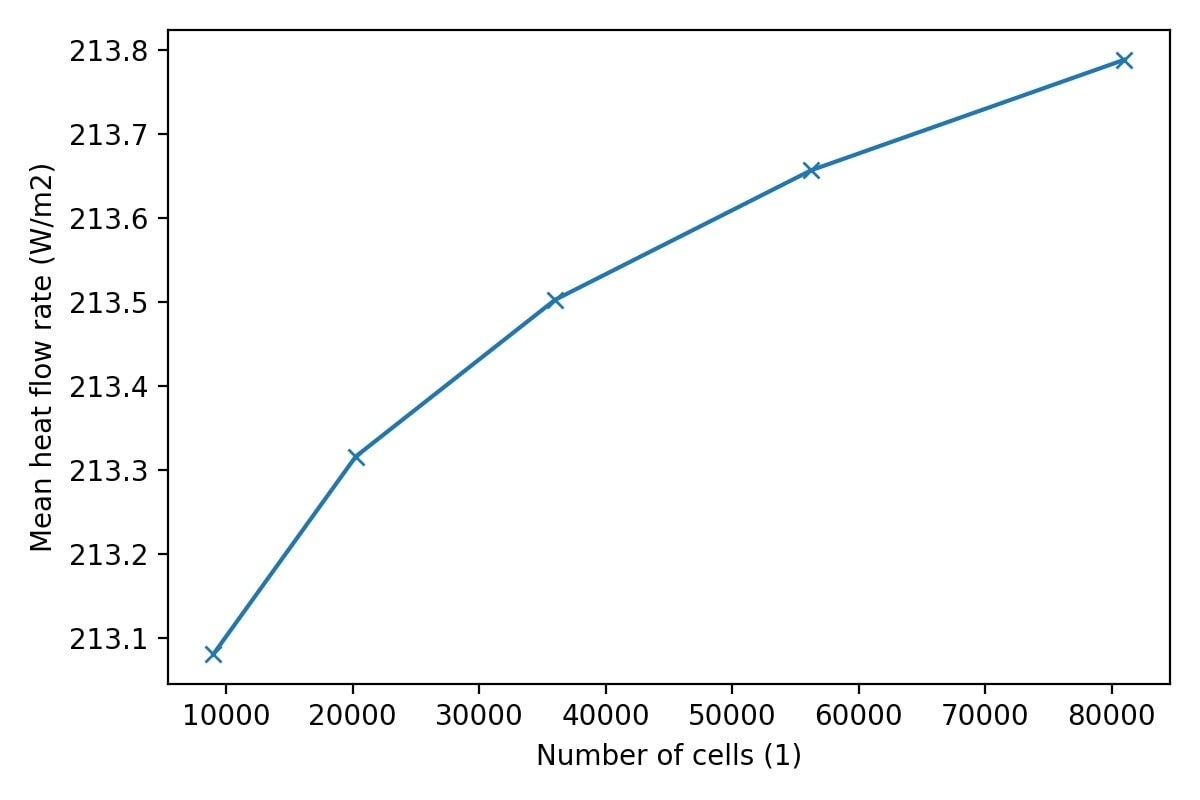TAGGED: 2D, heat-flux, heat-transfer, mesh-refinement
-
-
October 8, 2021 at 1:07 pm
felix.hochwallner
SubscriberHello,
I am simulating a 2D gap flow of air. The simulation is steady state, incompressible and the flow is laminar. The domain is 0.1 m long (x-dir) and 0.001 m wide (y-dir). At x=0 there is the inlet with a constant velocity and at x=0.1 m there is the outlet. At y=0 there is a wall and at y=0.001 m there is a symmetry BC. I am adding the energy equation. The temperature at the inlet is fixed with 293.15 K (20 °C) and and the wall it is set to be 283.15 K (10 °C). The mesh I am using has hexahedral nonuniform cells. I started with 300 cells in x-dir and 30 cells in y-dir (in total 9000 cells) and refined the mesh by increasing the amount of cells in both directions.
I now compare the outlet temperature and the mean heat flux density at the wall between the different meshes. The outlet temperature I calculate as a mass flow weighted average at the outlet. For the heat flux density I take the heat transferred at the wall and divide it by the area of the wall interface.
Neither the outlet temperature, nor the mean heat flux density seem to converge to a "constant" value. I increased the amount of cells until I hit 81.000 (900 x 90), which feels very fine to me. Residuals of the simulation are all great (<1e-9). I compared the mean heat flux density to correlations given in the VDI-Wärmeatlas and the absolute value seems to be fine (~ 1 % abbreviation).
Any ideas why the solution does not converge to a "constant" value? Here is a plot of the mean heat flux density in dependency of the amount of cells used:
October 11, 2021 at 12:34 pmKarthik Remella
AdministratorHello If I look at the plot, the trend seems to be heading in the right direction. See how the slow of the line connecting the two points in gradually decreasing. Please try and refine your mesh further and at some point, the line will become nearly parallel to the x-axis.
One more thing - since this is a heat transfer problem, please make sure that you have sufficient resolution in the boundary layer (first cell thickness as well as no. of inflation layers) to adequately capture the heat transfer (if you are not already taking care of this).
Karthik
October 11, 2021 at 1:41 pmfelix.hochwallner
SubscriberHello thanks for your reply!
I see that the slope is decreasing. However, I am surprised how "slowly" this happens as the cell count increases.
Currently I have no refinement near the wall. I thought for laminar flow this is not so important. How fine should the resolution near the wall be in order to map the heat transport well?
Best Felix
October 11, 2021 at 2:48 pmfelix.hochwallner
SubscriberHello what I did now is I used a grading in y-dir (perpendicular to the flow) of 5, so the second cell in y-dir has a 5 times larger y dimension, and so forth. By this I increase the mesh resolution close to the wall, while leaving the total amount of cells constant.
However, the result rarely changes. I still get a very similar plot to the one before:
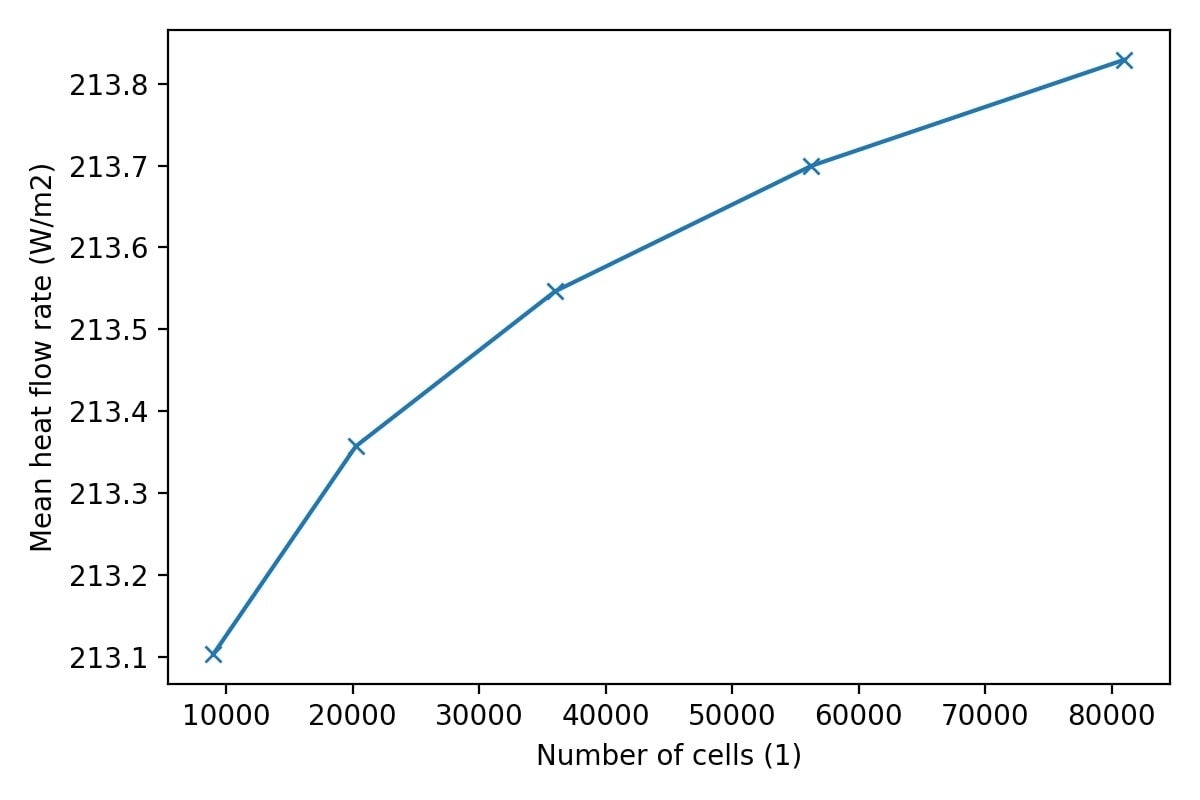 Best
Felix
Best
Felix
October 13, 2021 at 7:54 amfelix.hochwallner
SubscriberHello Karthig,
so I used another mesh now, where I have a better resolution close to the wall and also a better resolution close to the inlet. A screenshot of one of these meshes with 600 cells in x-dir and 20 cells in y-dir is shown here:
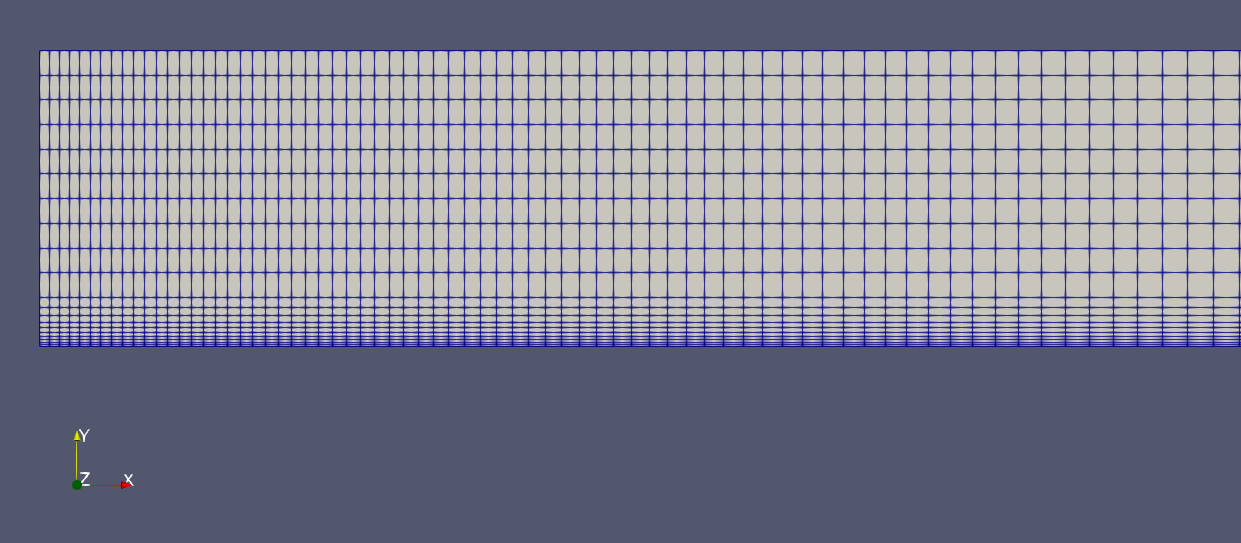 Again, I gradually increased the amount of cells. Now until I hit 432.000 cells (3600 x 120). Still, I get a very similar plot, when I plot the mean heat flow rate in dependency on the amount of cells:
Again, I gradually increased the amount of cells. Now until I hit 432.000 cells (3600 x 120). Still, I get a very similar plot, when I plot the mean heat flow rate in dependency on the amount of cells:
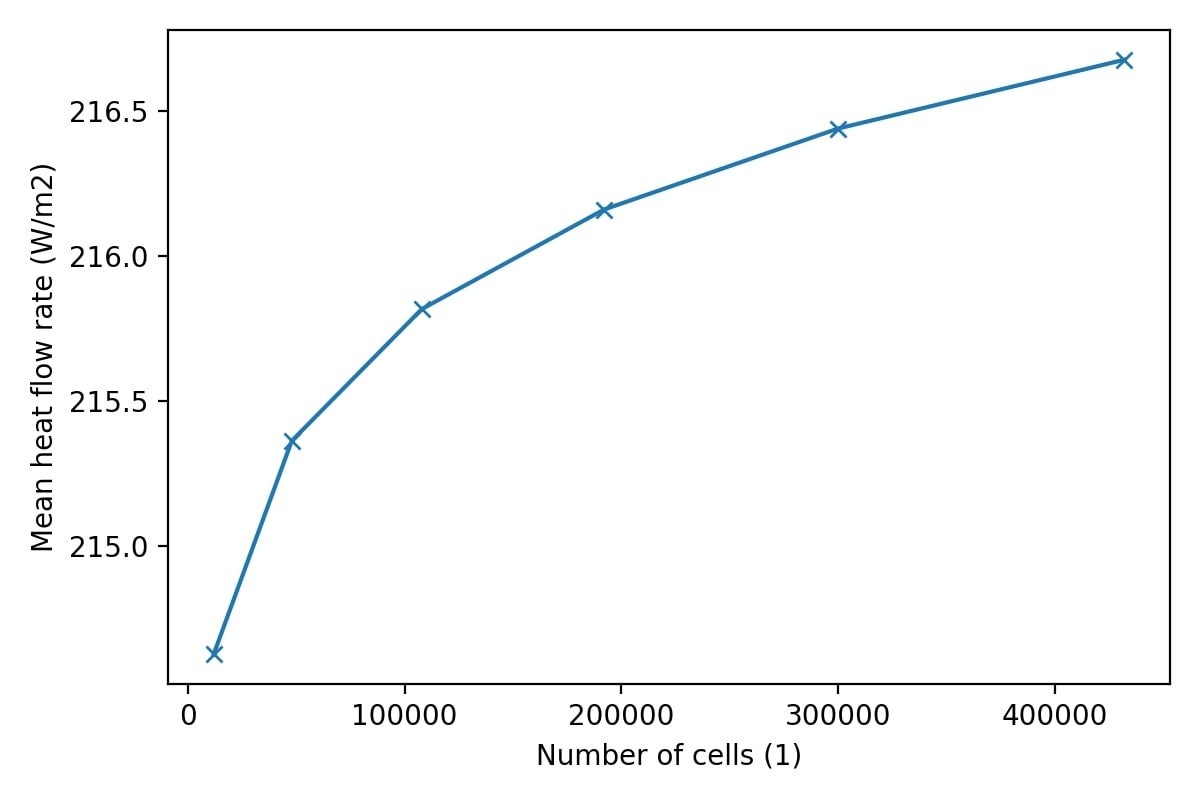 Any idea why?
Any idea why?
Best Felix
October 13, 2021 at 2:25 pmKarthik Remella
AdministratorHello Ideally, you should try and double the mesh count and you should see the error go down. As I stated earlier, the trend looks about right. Instead of running so many meshes, you could simply just keep doubling the mesh count and see if you obtain a better plot. Regarding how big a mesh you need - it is a difficult question to answer as it is, unfortunately, very problem-specific.
Thank you.
Karthik
October 15, 2021 at 7:38 amfelix.hochwallner
SubscriberHello I did double the mesh count now, as you said, until I reached 7.762.860 cells. While the temperature seems to reach a constant value, the mean heat flow rate does not. Here you can find the said plot for the mean heat flow rate:
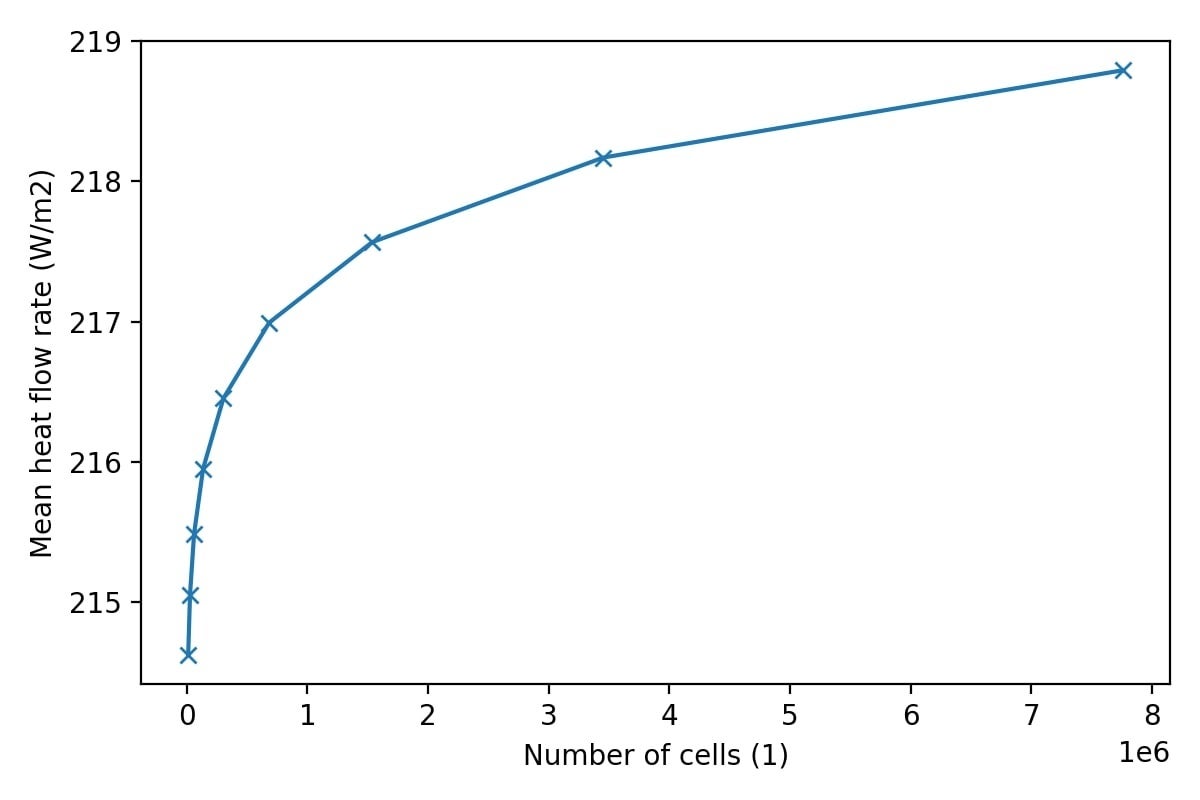 The situation looks especially problematic, when I plot the x-axis on a logarithmic scale, which is done in literature quite often:
The situation looks especially problematic, when I plot the x-axis on a logarithmic scale, which is done in literature quite often:
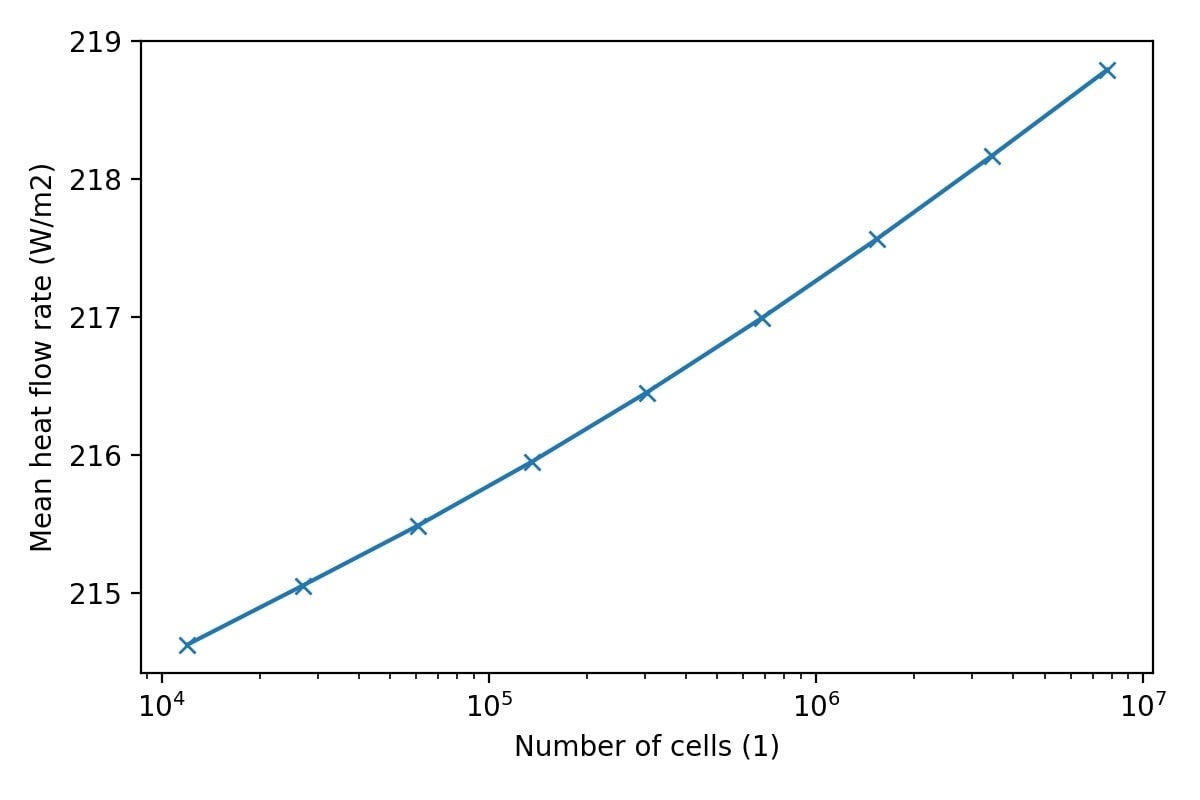 For completeness here you can see the plot for the outlet temperature:
For completeness here you can see the plot for the outlet temperature:
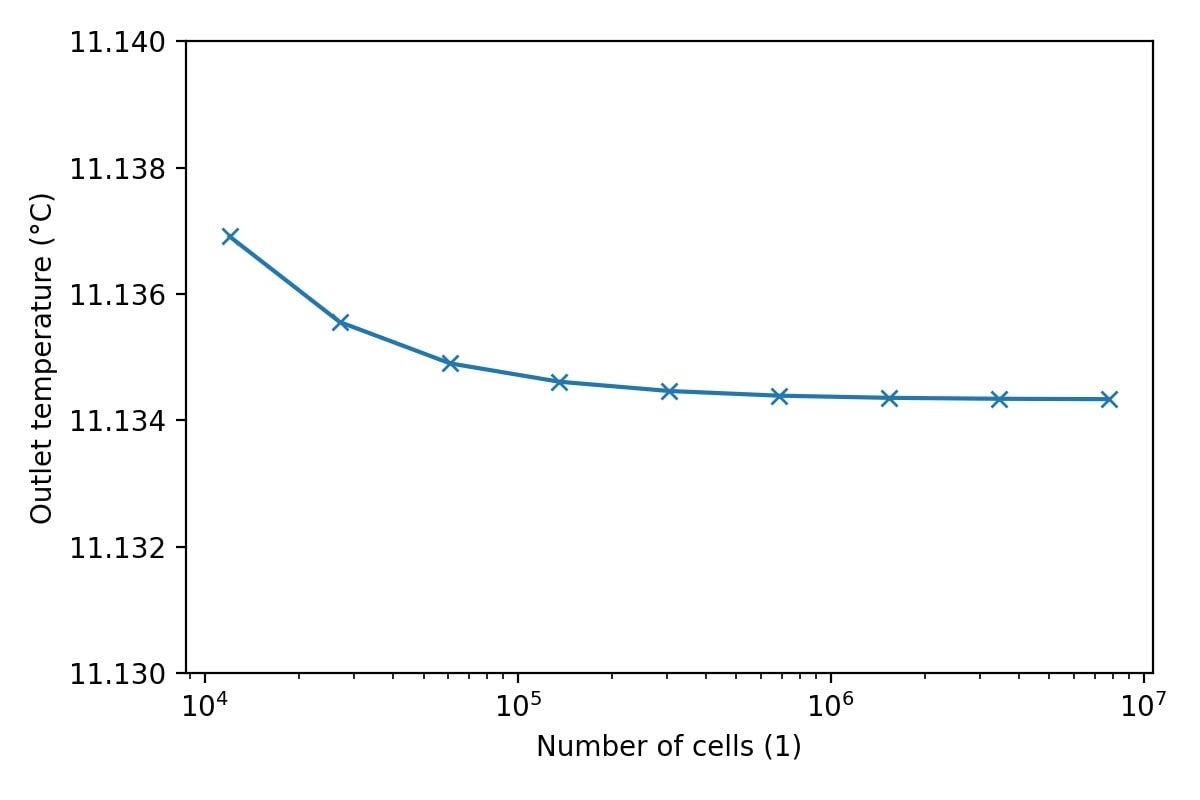 Any ideas how I can improve the accuracy of the calculation of the mean heat flow rate, to be able to use less cells?
Any ideas how I can improve the accuracy of the calculation of the mean heat flow rate, to be able to use less cells?
Best Felix
Viewing 6 reply threads- The topic ‘Mesh study heat transfer in gap flow’ is closed to new replies.
Ansys Innovation SpaceTrending discussionsTop Contributors-
2778
-
965
-
841
-
599
-
591
Top Rated Tags© 2025 Copyright ANSYS, Inc. All rights reserved.
Ansys does not support the usage of unauthorized Ansys software. Please visit www.ansys.com to obtain an official distribution.
-

